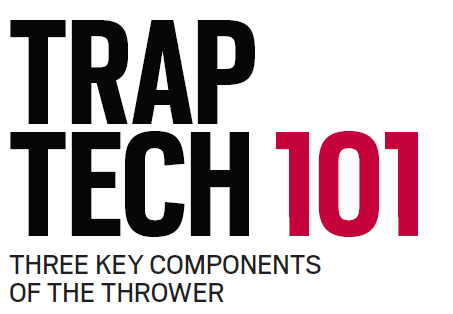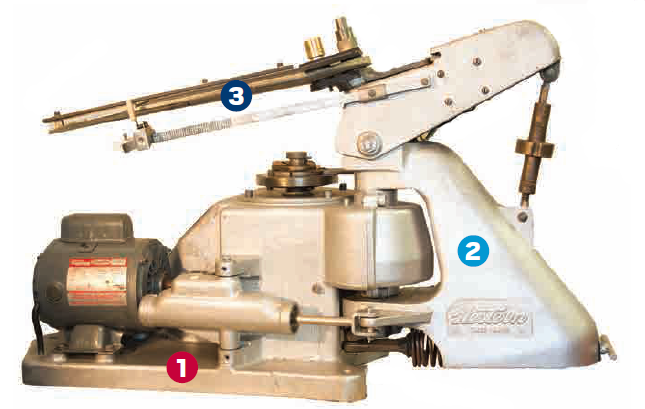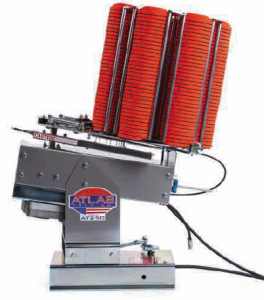
If you’ve ever looked inside a trap house, you’ve probably seen the modern trap machine—a noisy, steel behemoth loaded down with clay targets and lurching back and forth like some robotic predator. The trap is probably one of the coolest things about trap shooting!
But for all the hydraulic pumps, motors and cords, traps still do the same job they did a century ago: throw targets into a field. And, even though they’ve come a long way in the past 100 years or so, they still feature the same key parts: the base, the throwing platform and the arm.
 1. THE BASE
1. THE BASE
The base is very simple. It’s what keeps the machine fixed to the ground. In the past, you wanted a solid base so that the targets wouldn’t fall off and break. Today, there are a lot of moving parts, and you don’t want a $7,000 trap to just tip over.
The base is also where many of the key components of the machine are connected. Hydraulic hoses, electrical cords, switches and more have to be connected to the machine securely and safely, and without a good strong base, the trap won’t work for long.
2. THE THROWING PLATFORM
There are a wide variety of machines being used in clubs across the nation today. However, each trap features a section that is designed to oscillate (move from side-toside).
Traps oscillate randomly in order to make shooting more of a challenge. By moving from side-to-side at random, they make it less likely that shooters get the same targets for each shot and also prevent shooters from trying to anticipate where the next target will be thrown.
 3. THE ARM
3. THE ARM
If you’ve ever used a hand-held thrower to launch a target into the air, you know that it takes a lot of effort to get a target to fly high enough and far enough to shoot. In trap shooting, the target needs to fly 50 yards at around 42 mph, so it takes a lot of power to do that.
To throw a target, every trap’s throwing platform has an arm on which a target is placed. That arm is connected to both a motor and a very strong spring. First, a motor brings the arm back to the loading position. Bringing the arm to the loading position puts stress on the spring, and the arm is held in place by a trigger.
Once the arm is in position to be loaded, a target is placed on it. It wasn’t that long ago that people had to stay in the house with the trap machine and set each target on the arm before it could be thrown. In contrast, today’s modern traps are pretty slick. They now have automatic target feeders that can hold hundreds of targets at a time, making it easier for a range employee to keep multiple trap fields running during a large competition.
Even though technology has improved over the years, some traditions are based on how the old traps operated. Before electronic switches came into common use, traps were operated with rope pull-cord. To this day, most shooters still yell “Pull!” to get a target to launch. ✪
